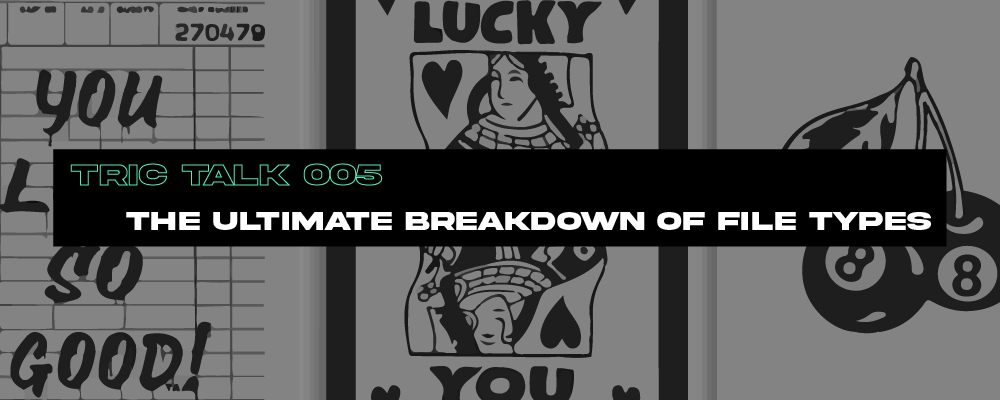The ultimate breakdown of file types
“Can you please send me your logo in *insert format here*?”
This is a question we ask every time we onboard a new client. However, file formats are not just a designer’s job to know. An account manager, social media manager, or CEO needs to know what files to request/use.
Here is the ultimate breakdown of file types when it comes to design, aka your personal cheat sheet for all things communication with your graphic designer and team.
First, let’s break down the difference between Raster files and Vector files.
Raster files are mostly commonly used if your project doesn’t need to be stretched or altered from its original size. This is because raster files are made up of pixels that have a set proportion and resolution. The most common types of raster files are the following:
.JPEG: JOINT PHOTOGRAPHIC EXPERTS GROUP
- The most common file type (think of the photos you take on your phone). You use/encounter this file almost everyday if you have social media
- They cannot be made larger once taken or created at a certain size without losing some of the quality
- They are used for smaller file sizes
- Can be used for both print and web
- This is one of the only formats social media accepts when posting
.PNG: Portable Network Graphics
- Don’t want the annoying white box around your image or logo? PNG is the file type you need
- These are also known as transparent files that you can place over other images/graphics seamlessly
- These are great web based files because you can alter the size more freely without losing the quality of the product
.GIF: Graphics Interchange Format
- Don’t want the annoying white box around your image or logo? PNG is the file type you need
- These are also known as transparent files that you can place over other images/graphics seamlessly
- These are great web based files because you can alter the size more freely without losing the quality of the product
Now let’s get into vector files – aka every designer’s dream file to receive.
Vector files do not have a set proportion or number of pixels within them. This means you can freely edit or resize them as needed. This flexibility helps designers update logos and files for all specific types of mediums, whether it be print, digital, OOH, and more.
.EPS: ENCAPSULATED POSTSCRIPT
- This is a universal file type, meaning that you don’t need 1 specific program to open them. This file type gives more flexibility to designers because they can be shared and edited through the designer’s preferred platform
.ai: adobe illustrator file
- AI files (no, not artificial intelligence) are made up of paths connected by points to create graphics. They can only be opened and edited with the Illustrator program
- They are the most commonly used for logo designs and print assets
- They are extremely flexible in their nature, therefore you can resize to almost any size you need without the quality being compromised
- Another plus: they can be exported in many different file formats that you may need, (aka raster files 😉 )
.pdf: portable document file
- A very common vector file format that non-designers may use daily
- If you’re reading this, you absolutely have shared a PDF in your career
- PDFs can usually be opened in Adobe Illustrator and edited because it is a vector type file
- You are able to input new information with form fields without disrupting the document format, making it versatile for those of all skill levels to access
- Typically they are read-only documents not intended to be edited (think resumes, final essays, etc.)
All of these file formats listed above are widely used among the graphic design world and business world. Working in the marketing industry, you will absolutely ask for one of these files at least once in your career, or send one of these files.

